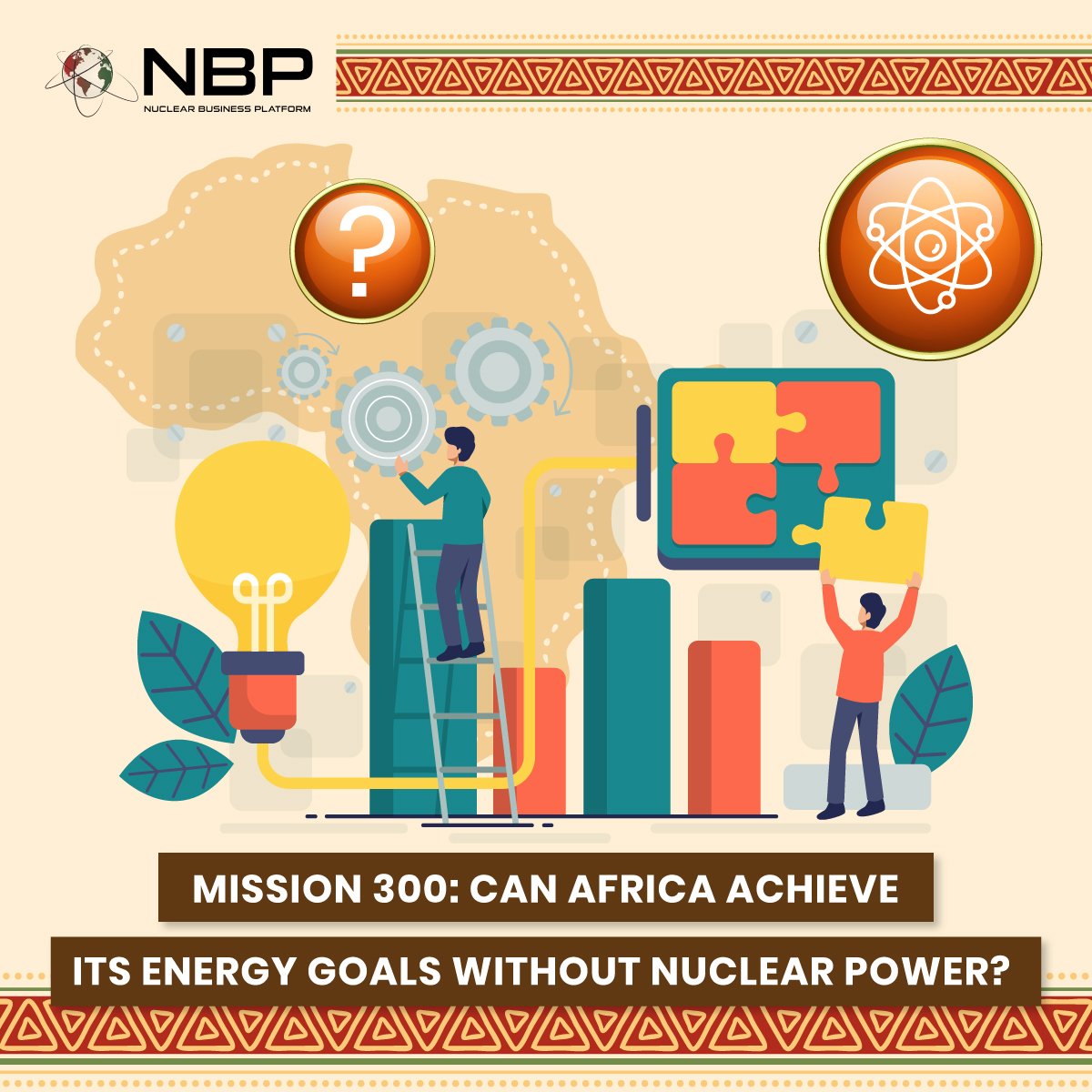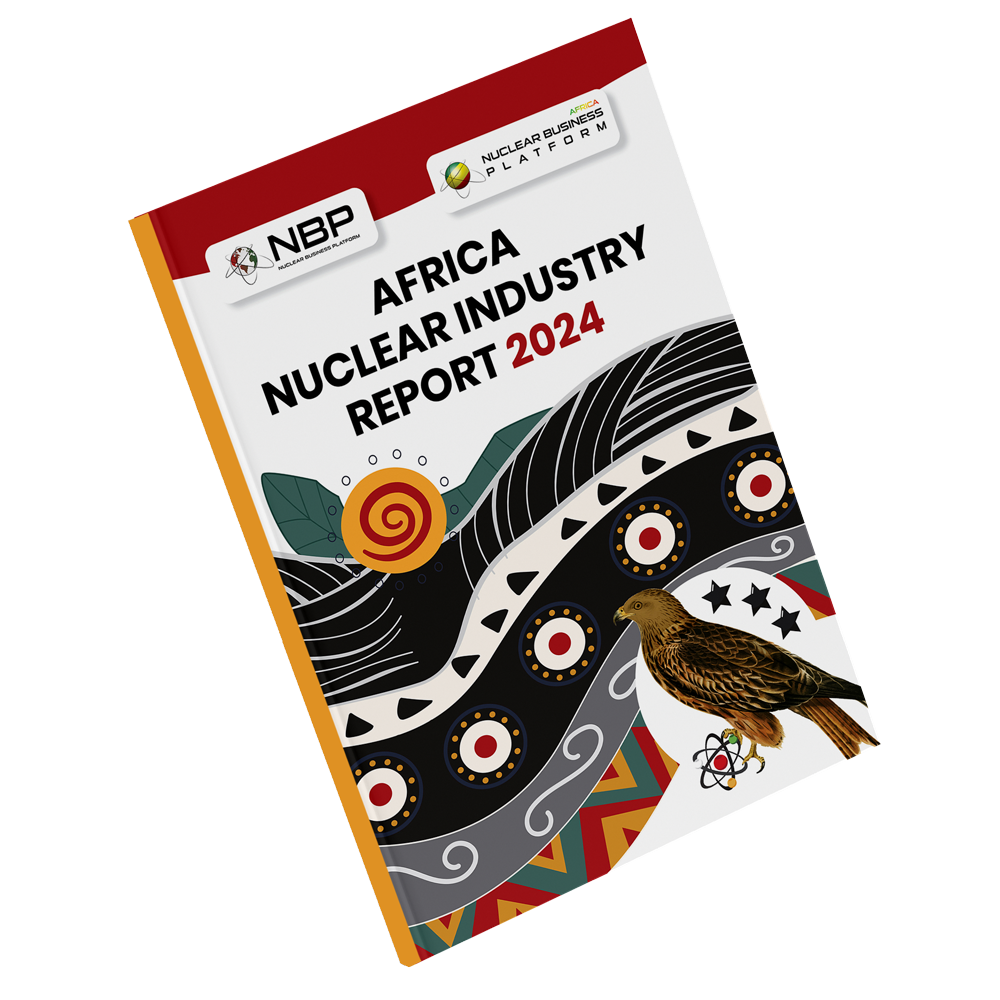Mission 300: Can Africa Achieve its Energy Goals Without Nuclear Power?
The Mission 300 Africa Energy Summit, convened in Tanzania, marked a significant milestone in the continent’s quest to bridge its energy deficit. With the ambitious goal of providing electricity access to 300 million people by 2030, the summit brought together governments, private sector leaders, and development institutions under the auspices of the Government of Tanzania, the African Union, the African Development Bank (AfDB), and the World Bank Group. The discussions rightly emphasized scaling grid infrastructure, integrating renewable energy, and promoting decentralized solutions. However, the conspicuous absence of nuclear energy from the agenda raises critical questions about the comprehensiveness of Africa’s energy strategy. While the summit’s focus on renewables is commendable, the exclusion of nuclear power—a proven, reliable, and transformative energy source—represents a missed opportunity to address Africa’s long-term energy and economic challenges.
This lack of emphasis on nuclear energy raises important questions about Africa’s energy strategy. While renewables such as solar and wind play a crucial role in expanding access, they alone may not provide the stable, large-scale electricity supply needed to drive industrialization. As Africa seeks to bridge its energy gap, ensure long-term affordability, and build a self-sufficient power sector, nuclear energy should be part of the broader conversation. Without it, will Mission 300 be enough to secure the continent’s energy future?
The Limitations of Intermittent Renewables: A Fragile Foundation for Industrialization
Renewable energy sources, particularly solar and wind, have rightfully gained traction as key components of Africa’s electrification efforts. Yet, their inherent limitations cannot be overlooked. Solar and wind energy are inherently intermittent, dependent on weather conditions, and incapable of providing the consistent, baseload power required to sustain industrial growth. Without substantial investment in energy storage systems—which remain prohibitively expensive—these renewables cannot guarantee the 24/7 electricity supply essential for economic development. Moreover, Africa’s often fragile grid infrastructure struggles to accommodate high levels of intermittent energy, leading to voltage fluctuations, frequency instability, and frequent power outages. While renewables are indispensable for expanding energy access, they alone cannot serve as the cornerstone of Africa’s industrialization agenda.
Nuclear energy, by contrast, offers a robust solution to these challenges. As a reliable, zero-carbon source of baseload power, nuclear energy is immune to the vagaries of weather and does not require fossil fuel backups. With operational lifespans of 60 to 80 years, nuclear power plants provide long-term energy security, making them an ideal foundation for industrial and economic growth. Countries such as China, Russia, and South Korea have demonstrated the transformative potential of nuclear energy, using it to stabilize their grids, reduce fossil fuel dependence, and drive industrialization. Africa, with its vast energy needs and aspirations for economic transformation, cannot afford to ignore this proven model.
The Myth of High Costs: Is Nuclear Really “Too Expensive” for Africa?
A persistent argument against nuclear energy is its perceived high cost. However, this narrative often fails to account for the long-term economic benefits of nuclear power. While the upfront capital investment for nuclear plants is significant, their operational costs are remarkably low, with minimal fuel expenses and maintenance requirements over decades of service. In contrast, solar and wind installations require substantial reinvestment every 20 to 25 years due to component degradation, and their levelized cost of electricity (LCOE) calculations frequently exclude the hidden costs of storage, grid integration, and backup systems. When these factors are considered, nuclear energy emerges as a cost-competitive and economically viable option. According to a joint report by the Nuclear Energy Agency (NEA) and the International Energy Agency (IEA), nuclear power is expected to have the lowest LCOE among dispatchable low-carbon technologies by 2025, ranging from $55 to $95 per MWh. This is lower than coal, which could reach $100/MWh, and gas at $80/MWh. While onshore wind has an LCOE between $40 and $50/MWh, offshore wind ranges from $80 to $110/MWh, and solar PV falls between $40 and $80/MWh. For nuclear plants in long-term operation, the LCOE drops below $40/MWh, making them the most cost-effective low-carbon electricity source. Nuclear construction costs range from $2,157 to $6,920 per kW for new plants but drop significantly to $391 to $629 per kW for plants in long-term operation, making nuclear highly competitive with wind, solar, and coal. The advent of Small Modular Reactors (SMRs) further enhances the appeal of nuclear energy for Africa. SMRs, which can be constructed in four to five years, require less land and offer a lower cost per unit of energy, making them particularly suited to the needs of African nations. These figures underscore the economic rationale for including nuclear energy in Africa’s energy mix.
Industrialization and Energy Sovereignty: The Indispensable Role of Nuclear Power
Electrification is not merely about lighting homes; it is the lifeblood of industrialization and economic progress. Africa’s aspirations to transition from raw material exports to high-value manufacturing hinge on the availability of reliable, industrial-strength electricity. Hydropower, while valuable, is increasingly vulnerable to climate change and seasonal variability. Fossil fuel-based power plants, reliant on volatile global markets, expose African economies to price fluctuations and supply disruptions. Intermittent renewables, despite their merits, lack the capacity to sustain energy-intensive industries such as mining, manufacturing, and large-scale production.
Nuclear energy stands alone as a large-scale, zero-carbon solution capable of delivering the firm, uninterrupted power required for industrialization. As Wisdom Ahiataku-Togobo, former Director of Renewables at Ghana’s Bui Power Authority, aptly noted during the Africa Nuclear Business Platform (AFNBP) 2024, “Show me a country with at least one nuclear power plant, and I will show evidence that the country is industrialized.” South Africa, the only African nation with an operational nuclear power plant, exemplifies this link between nuclear energy and industrial development. If Africa is to replicate this success on a broader scale, nuclear energy must be integral to its energy strategy.
Ahiataku-Togobo’s analogy of energy as food resonates deeply: “If you are hungry and there’s no food, you can make do with fruits, but when you need energy to dig the ground, very soon, we will be going for lunch.” This metaphor underscores the inadequacy of intermittent renewables as the backbone of industrialization. Just as fruits cannot sustain a laborer, solar and wind alone cannot power Africa’s industrial ambitions. Nuclear energy, with its firm and reliable output, is the indispensable meal that will fuel the continent’s economic transformation.
A Strategic Imperative: Why Africa Cannot Afford to Exclude Nuclear Energy
The exclusion of nuclear energy from Mission 300 is not merely an oversight; it is a strategic misstep with far-reaching consequences. Without nuclear power, Africa risks perpetuating high electricity costs, grid instability, and a reliance on short-lifespan energy projects that require constant reinvestment. The continent’s industrialization efforts will remain stymied, trapping economies in a cycle of raw material dependency and hindering the transition to high-value manufacturing. Furthermore, the absence of nuclear energy undermines Africa’s energy sovereignty, limiting its ability to shape its own energy future and achieve long-term self-sufficiency.
The growing interest in nuclear energy across Africa is a testament to its potential. According to the Nuclear Business Platform (NBP), 21 African countries are actively considering nuclear energy as part of their energy mix. Seven African nations—South Africa, Egypt, Ghana, Uganda, Nigeria, Rwanda and Kenya—are classified as Tier 1, with firm commitments to incorporating nuclear power between 2030 and 2037. Tier 2 countries, including Morocco, Burkina Faso, Ethiopia, Tunisia, and Niger are building the necessary infrastructure to support nuclear development. Even Tier 3 nations, such as Senegal, Zambia, Sudan, Tanzania, DR Congo, Namibia, Algeria, Zimbabwe, and Burundi, have expressed interest in nuclear energy and are taking preliminary steps toward its adoption.
Conclusion: A Call for a Balanced and Inclusive Energy Strategy
Mission 300 represents a bold and commendable initiative to address Africa’s energy deficit. However, its success hinges on the adoption of a balanced and inclusive energy strategy that recognizes the unique strengths of nuclear power. While renewables are essential for expanding energy access, they cannot alone meet the continent’s industrial and economic aspirations. Nuclear energy, with its reliability, scalability, and long-term cost-effectiveness, must be part of the conversation. To exclude it is to deny Africa the opportunity to build a sustainable, resilient, and independent energy system capable of lifting millions out of poverty and propelling the continent toward a prosperous future. The question is not whether Africa can afford nuclear energy—it is whether Africa can afford to ignore it.
As Africa continues to grapple with its energy challenges, the upcomingAfrica Nuclear Business Platform (AFNBP) 2025, scheduled to take place inMorocco from April 22-24, represents a pivotal moment for the continent’s nuclear ambitions. This high-level conference, bringing together policymakers, industry leaders, and experts from across the globe, will serve as a critical platform for advancing nuclear energy development in Africa. By fostering dialogue, sharing best practices, and exploring innovative technologies such as Small Modular Reactors (SMRs), the AFNBP 2025 will play a vital role in accelerating the adoption of nuclear energy across the continent. The choice of Morocco as the host nation is particularly symbolic, given its proactive stance on nuclear development and its potential to lead by example in integrating nuclear power into Africa’s energy mix. This conference is not just an event; it is a catalyst for change, underscoring the transformative potential of nuclear energy to provide reliable, affordable, and sustainable power, drive industrialization, and lift millions out of poverty. As Africa stands on the brink of an energy revolution, the AFNBP 2025 will be instrumental in shaping a future where nuclear energy is no longer a missing piece but a cornerstone of the continent’s energy strategy.



